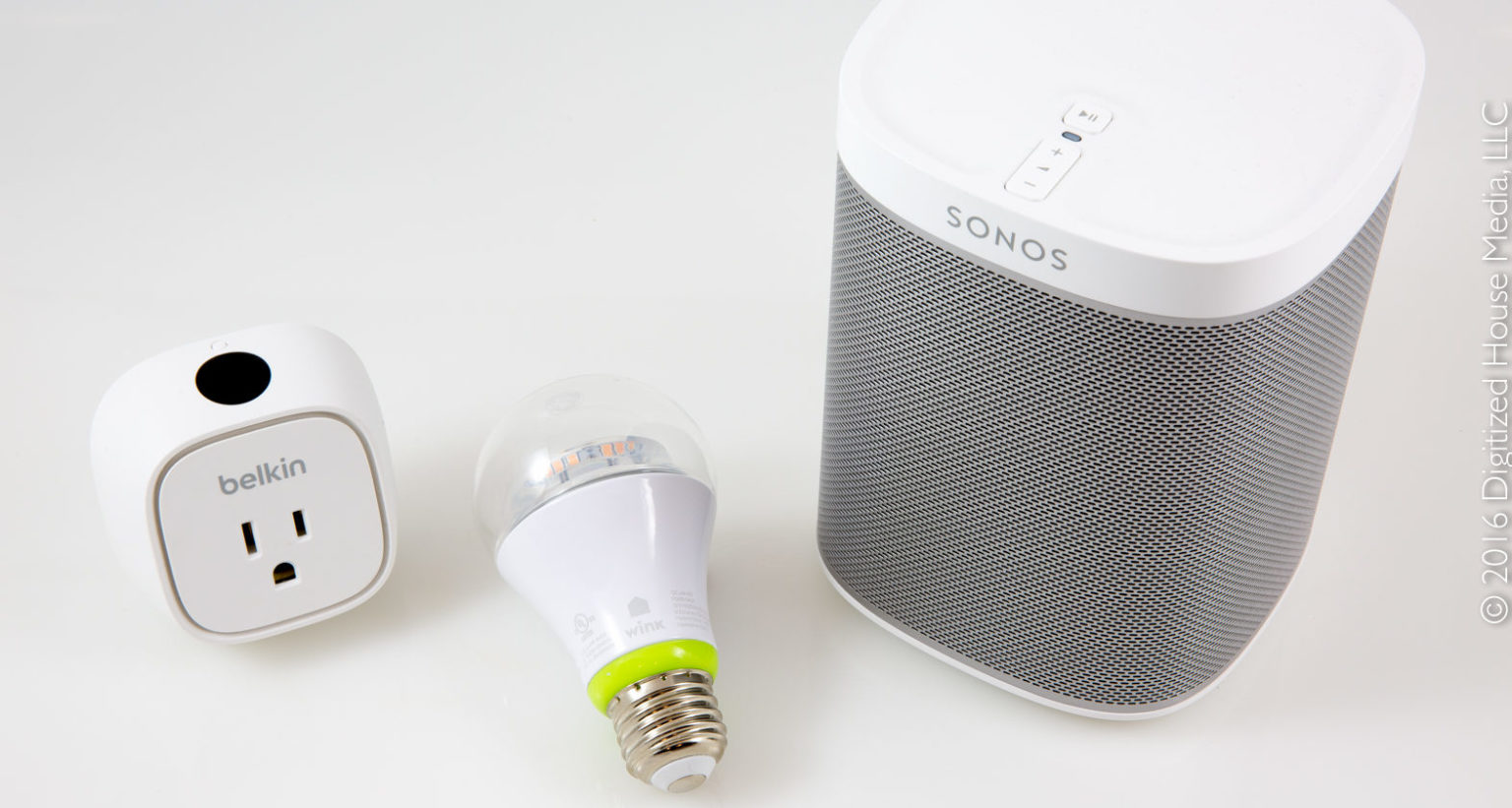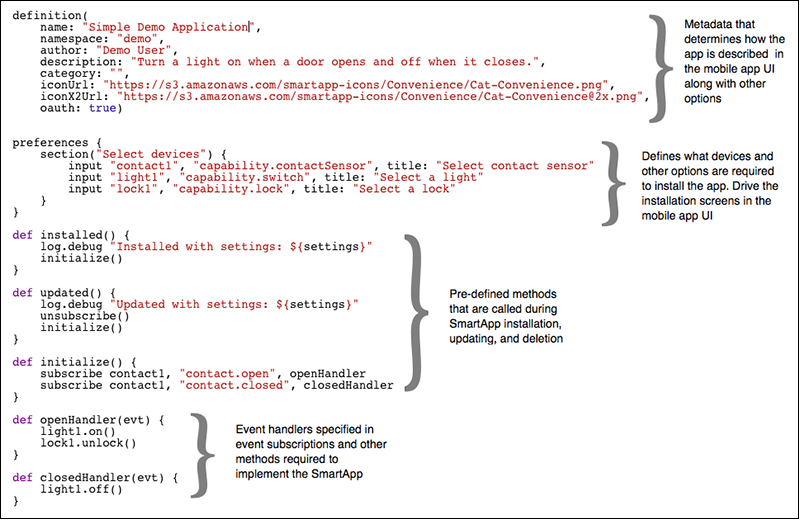

- #Smartthings smartapp example update
- #Smartthings smartapp example code
- #Smartthings smartapp example download
#Smartthings smartapp example code
Paste in the MQTT Bridge SmartApp code and click Save. Click New SmartApp, followed by From Code. After this, any registered devices will start sending their events to MQTT. This will create the link between SmartThings and the MQTT Bridge. Click edit and fill in the 3 pieces of information it asks for. This will bring up a page that allows you to edit your device’s Preferences. Go back to My Devices, and click on your new device in the list. Fill in the other boxes however you like. For Type, scroll to the bottom of the list and find your newly created MQTT Bridge.
#Smartthings smartapp example update
Enter a name, and pick any random set of characters for the Device Network Id (this will automatically update later). Go back to My Devices in the IDE, and click New Device. Choose From Code and paste in the MQTT Bridge Device Code. Go to the Smart Things Device IDE and Create New Device Handler. The next step (and possibly the most confusing) is the device type. The easiest approach is to use Docker, and run a command like the following: There is very little you need to do to get Mosca running.


There are a handful of MQTT brokers available in Open Source land. Installs easily on Linux and macOS.Īssuming that you already have Home Assistant and Smart Things running, you will first want to get an MQTT broker running. No need for installing any dependencies or worrying about conflicts.

However, there are a couple key terms that might be new to you: This is going to be a pretty detailed tutorial on setting up our SmartThings bridge. We wanted a solution that can bridge the awesomeness of Home Assistant with the SmartThings hub that works with almost everything. What do I do now? Should I buy another hub? Should I just buy a Z-Wave stick? You spent your weekend getting everything set up, showing it off to your significant other, but in the end you got stumped when it came to integrating with all your existing SmartThings toys. Then one day you were browsing reddit and discovered the amazingness that is Home Assistant! A solution that offered dashboards, graphs, working support for Nest, and REAL EASY automation! After a week of ownership, you realized that building dashboards and automating required writing way more Groovy then you expected. You probably bought it when you were looking to get into the whole Home Automation hobby because it worked with pretty much everything and offered you the ability to automate anything. This is a guest post by Home Assistant users Jeremiah Wuenschel and St. See the video below for a view of the switch in action.FebruJeremiah Wuenschel and St. After a few moments the device should appear in the Arduino app, rename it if want and you are done. Set the wireless shield back to micro and hit the Arduino reset. Next go into the SmartThings app and in the my home tab select add new Thing.
#Smartthings smartapp example download
Set the wireless shield to USB and compile and download the code. Once the code is pasted click save and publish for self.įinally download the code below into the Arduino IDE. copy and paste the code from the link below. When there click Create New Device Handler, followed by from code. log in and navigate to the device handlers. Next we need to upload the device handler to the SmartThings online IDE. The code should take about half a minute to run. Switch the wireless shield switch back to micro and reset the Arduino. Next make sure the switch on the wireless shield is set to USB and import the code Arduino Xbee Setup (link below) to the Arduino IDE, compile and download to Arduino. Arduino Uno with wireless shield and Xbee module.


 0 kommentar(er)
0 kommentar(er)
